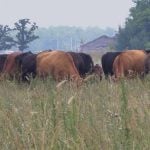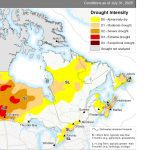A research project in southwestern Saskatchewan shows pulse crops can be used as an annual forage or hay crop.
The three-year project was carried out by Wheatland Conservation Area Inc., an applied research and demonstration farm near Swift Current.
“We began the study with the introduction of five treatments: Grande normal-leaf yellow pea, Carneval semi-leafless yellow pea, Grande paired with barley, C-quattro fenugreek and alfalfa paired with Carneval,” said Bryan Nybo, Wheatland’s farm manager.
“During the project, producers offered suggestions, so over the three years we also added Grande paired with a forage oat, 40-10 long-vine silage pea and 40-10 paired with triticale. The barley, forage oat and triticale were included to improve the standability of the Grande and the 40-10 long-vine pea, while the open canopy of the semi-leafless Carneval allowed more sunlight to the emerging alfalfa seedlings.”
Read Also

Alberta eases water access for riparian restoration
Alberta government removes requirement for temporary diversion licence to water plants up to 100 cubic metres per day for smaller riparian restoration projects
Nybo said the trials found that growing annual crops for forage production is a viable way to provide feed on a short-term basis, and can also replace summerfallow in a crop rotation.
The average biomass from both the 40-10 silage pea and the silage pea-triticale mix was more than three tons per acre, he added, which was significantly higher than the remaining treatments.
The protein of all treatments ranged from 16.1 to 17.5 percent.
“The Grande and Carneval mixes are popular with producers, due to seed availability and low seed cost,” Nybo said.
The project’s second objective was to test the ability of alfalfa to establish itself in a legume cover crop, providing the farmer with a forage crop in the year of establishment. Carneval was under-seeded with alfalfa, and the rate of establishment the following year was more than 90 percent.
“We must emphasize that there were no drought conditions during the project, however, so it is unknown how this would effect the feasibility of annual legumes for feed or the establishment of alfalfa.”
















